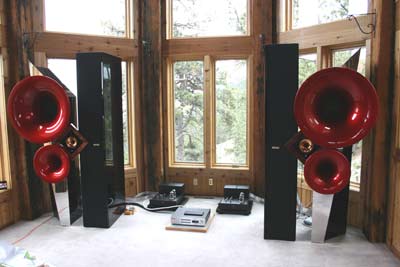| |
ML2.1 FIRST IMPRESSIONS
 |
- To start off we hooked up the ML2s to the Acapella Triolon
Excalibur speakers. They are about 97 to 98 dB efficient but dip
down to a little about 3 ohms, the way I read their impedance
chart. Because of this Neli insisted we use the 4 ohm taps on the
back of the ML2 amplifiers. I figured we had to break in all the
taps sometime, though I am jonesing to hear what the 8 ohm taps
sound like, as I usually prefer the sound of the 8 ohm taps on
most amplifiers.
|
-
Right out of the creates, the harmonic structure and
pacing/rhythm/timing was first class - the best we have heard on the Triolons. This was a surprise...both that it was so good in any aspect,
right out of the box this was, and that it was better in these two
particular aspects.
Otherwise, the sound was horribly, frustratingly, disgustingly
compressed. Remembering that the ML1.1s sounded like this when they were
young, we will endeavor to persevere....
|
|
4-1-2005 |
|
|